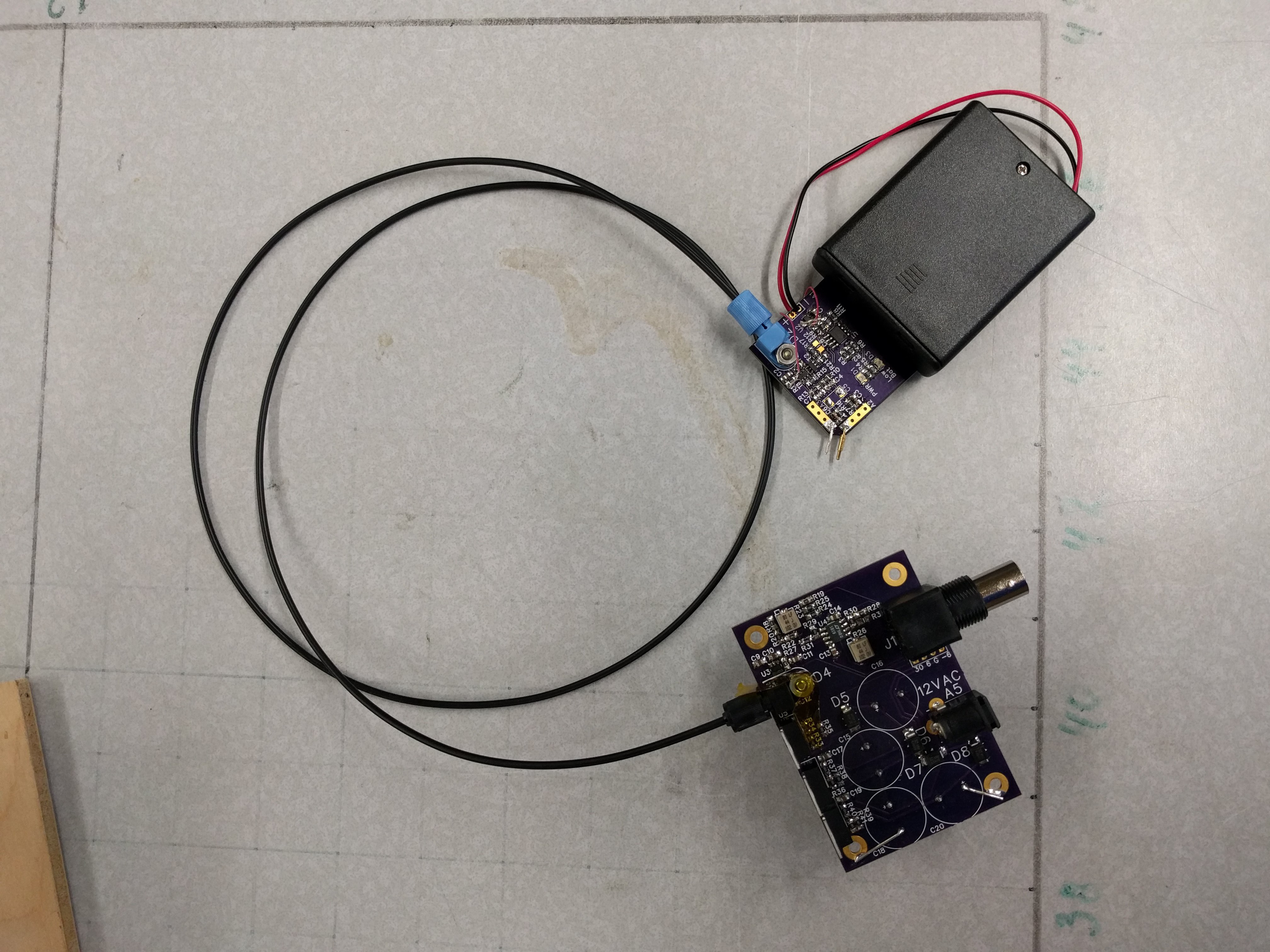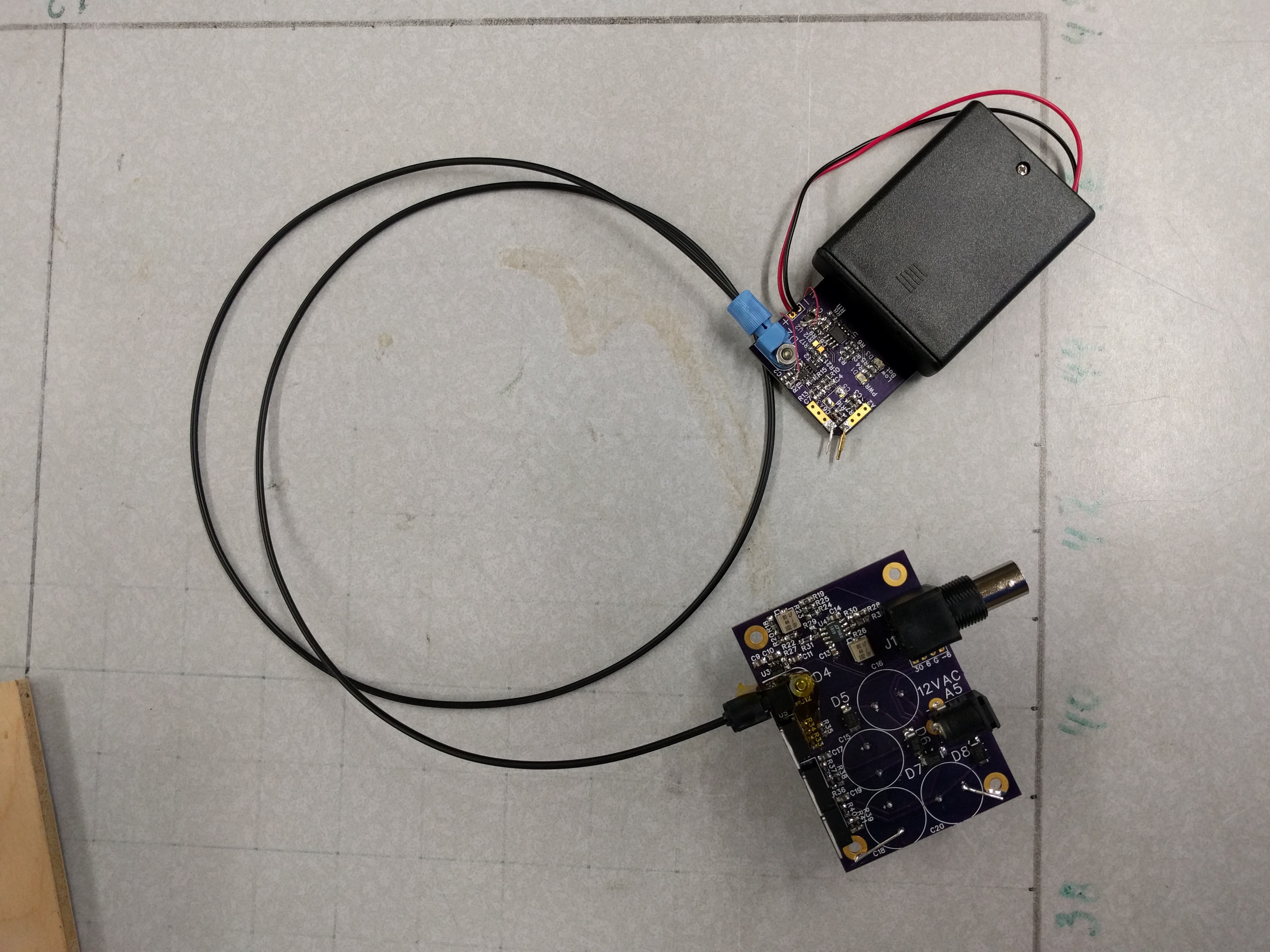The regulators came in and I found some AAA batteries, so it's time to test the whole mess.

First problem is that the OPA 847 is oscillating a bit near 100MHz. The output is also rather noisy. So since the OPA847 has more bandwidth than required due to the 35MHz front end, I increased the feedback resistor R27. Boosting it to 15K was enough to quiet the oscillation, but I went all the way to 39K to help with noise. Also dropped the LT1819 gain because of the increased sensitivity of the OPA847 stage, and because the LT1819 is a significant noise source. Noise is now about 15mVrms at the output or 150mVrms at the input. While still quite useful, the noise level is a lot higher than I'd like and limits the useful signal amplitude range of the probe. Looks like I should assemble 1x and 0.2x versions of the probe as well. Maybe the next revision should have plug-in input dividers?
Rise time and delay are a respectable 10nS and 20nS. Ch1 is in Yellow and shows the input signal, while Ch2 is blue and shows the input signal after it passes through the isolated scope probe.


Trim pots R23 and R26 work very well for adjusting offset and gain respectively. Though they do require a microscopic screw driver. DC offset drifts plenty with both temperature and fiber position effects. That said, DC offset is quite stable once everything warms up as long as the fiber isn't moved much. The probe gain is much more stable. It shouldn't need adjustment as long as the probe head batteries are charged and the fiber is kept relatively straight.
Finally, I hooked the probe to an improvised white noise source that's flat to 50 MHz. The FFT of the probe output is shown below and is consistent with a bandwidth of 35MHz or so. The FFT also shows that the signal rolls off quite quickly. I did attempt to extend the bandwidth of the probe by adding a 22pf capacitor in parallel with R31. While this did extend the bandwidth, it also resulted in a blunt peek at 60-70MHz. Didn't keep the capacitor because the distortion was just too obvious.


Discussions
Become a Hackaday.io Member
Create an account to leave a comment. Already have an account? Log In.